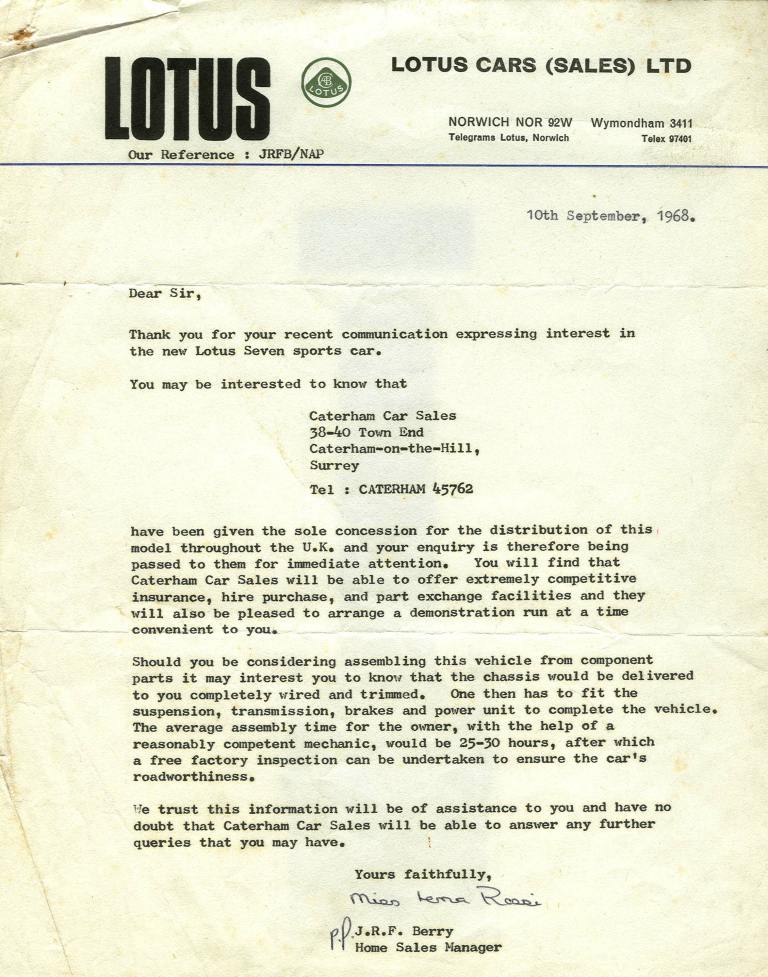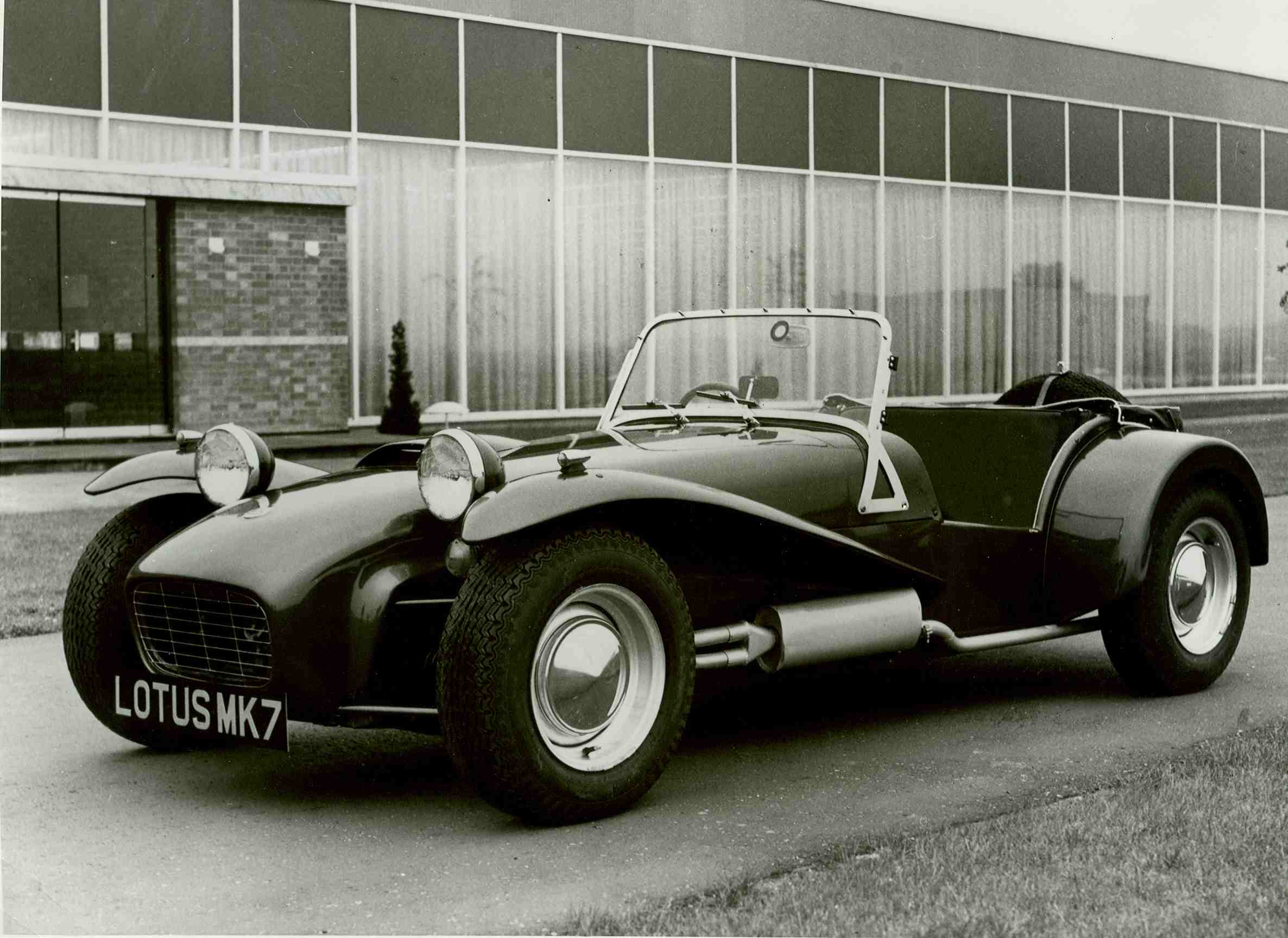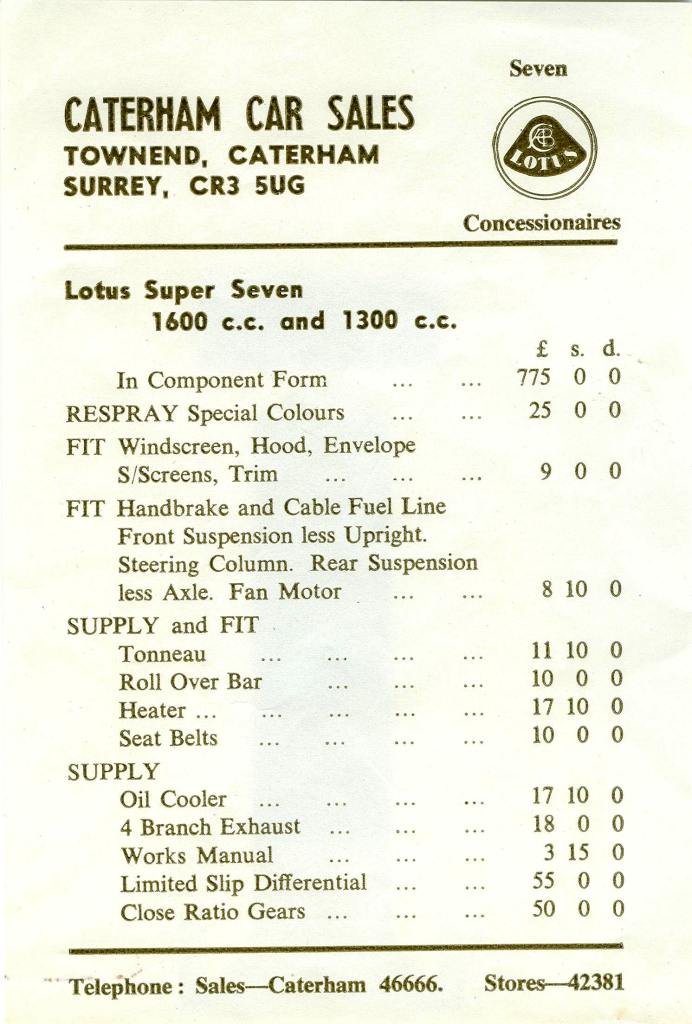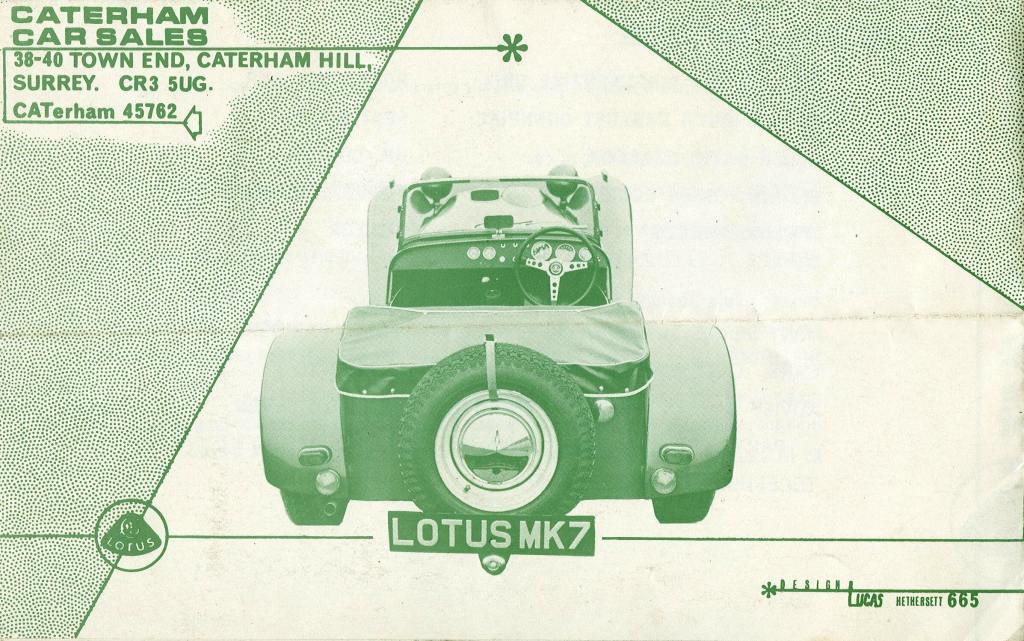 |
LOTUS SEVEN REGISTER |
the web site for the
Seven made by Lotus between 1957 and 1973
 |
LOTUS SEVEN REGISTER |
the web site for the
Seven made by Lotus between 1957 and 1973
 Letter announcing that Caterham Car Sales are to have
sole concession.
Letter announcing that Caterham Car Sales are to have
sole concession.
 Official factory photograph taken at Hethel.
Official factory photograph taken at Hethel.
 Caterham's Price List.
Caterham's Price List.
 Caterham's Lotus Seven Brochure.
Caterham's Lotus Seven Brochure.
|